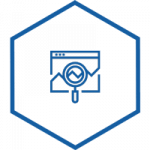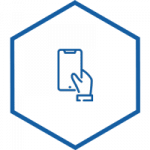DATA CENTER CONSULTING
DESIGNED TO GROW WITH YOUR BUSINESS
SOLUTIONS FOR FLEXIBILITY AND GROWTH?
In today’s dynamic and rapidly evolving business landscape, executives are looking for ways to adapt to an ever-changing technology and economic environment. For companies, this means finding a way to maximize their IT investments while also being able to adjust to new challenges and opportunities. To achieve this, executives are evaluating a range of options for data centers, including on-site, virtualization, and cloud solutions. The choice can be challenging, as each option presents its own set of advantages and limitations. The need to modernize infrastructure compounds this difficulty, as companies must consider not only their current needs but also future demands. However, sticking to a rigid, inflexible approach is also not cost-effective in the long run. To stay competitive and agile, companies need to remain open to new possibilities and adopt a flexible approach that enables them to pivot as the situation requires.
SHOULD YOU MODERNIZE OR BUILD NEW?
SIGNS YOU MAY NEED A (NEW) DATA CENTER
- Existing IT infrastructure not meeting the demands of the business, its employees, and customers
- Limited rack space
- A need to host business applications, databases, or high-performance compute services
- Hardware has no cooling system
- Need more power/circuits
- Running out of disk or rack space
- Data capture, storage, analysis and processing is growing exponentially faster than your existing systems handle
- Running out of power leading to increased downtime
- Servers are getting maxed out, impacting employee productivity
- No room to add new servers
- Hardware is old or outdated, and equipment lifecycle management is not in place to help inform optimal investment decisions
LOCATION IS EVERYTHING

BENEFITS OF CLOUD COMPUTING

MANAGED IT SERVICES
Get the best help desk assistance, maintenance, and cybersecurity to keep your business operating smoothly.

CYBERSECURITY
Keep your business information safe from hackers, enhance your network’s security, and strengthen your defenses.

AI & MACHINE LEARNING
We specialize in providing businesses transformation using AI & ML Innovation.

CLOUD SERVICES
Upgrade your computer systems, avoid upfront expenses, and switch to payment plans that allow for more flexibility.

RPA AUTOMATION
Automate business processes and discover new business opportunities

DATA MODERNIZATION
Transform your organization’s data infrastructure and practices to meet the demands of the digital age, involving agility, integration, scalability, cloud adoption, security, advanced analytics, and data governance.

